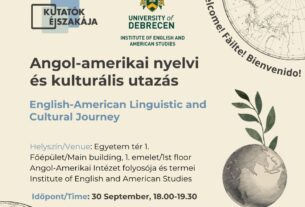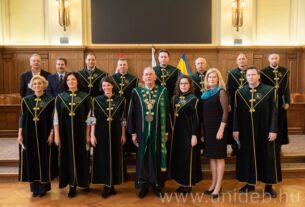The biotechnology program currently running at the University of Debrecen will generate genetically top-quality sheep. There will be animals of state-of-the-art genetic composition bred here, a result that simply would not be possible through the natural breeding process of domestic stock.
In the leading animal farming countries of the world, such as the United Kingdom, France, Australia, or the United States, artificial insemination (AI) or embryo transfer (ET) are almost a daily routine both in cattle and in sheep farming. The primary objective of “test-tube baby” or “surrogate mother” programs, in addition to the effort of gene preservation of indigenous and small-sized animal stock, is to make the breeders’ work more effective. In Hungary, the application of modern bio-technical solutions that would result in significant genetic progress in the sheep industry is still rare. The proportion of artificially inseminated sheep is below one percent, and embryo transfers have been rather scarce during the past decades. The practical utilization of these methods is lagging behind even when compared to the domestic intensive research and development programs implemented in the 1980s.
It was in the year 2009 that the researchers of Debreceni Egyetem Mezőgazdaság-, Élelmiszertudományi és Környezetgazdálkodási Kar [Faculty of Agricultural and Food Sciences and Environmental Management at the University of Debrecen] first launched a “sheep test-tube baby” program in unison with Állatorvostudományi Egyetem [University of Veterinary Medicine], under the supervision of Sándor Cseh. They transferred frozen Dorper embryos imported from Canada into domestic merino ewes. During the fall of 2015, in cooperation with the French breeding organization of the Blanche du Massif Central breed, they initiated the issuing of a permit to establish a Juh és Kecske Embrióátültető Állomás [Sheep and Goat Embryo Transfer Station] in Karcagi Kutatóintézet [Karcag Research Institute] of the university. The current head of the embryo transfer station is István Monori (AKIT Karcagi Kutatóintézet), while assisted reproduction is supervised by Nóra Pálfyné Vass (DE MÉK [FAFSEM UD]). The embryology-related work is done by Szilárd Bodó (Nemzeti Agrár Innovációs Kutatóintézet [National Agricultural Innovation Research Institute]), and the professional requirements and supervision are the responsibility of János Oláh (DE AKIT) and István Egerszegi (Szent István Egyetem [Szent István University]).
“At the transfer station, we can take care of the storage and transfer of imported breeding material (like embryos and semen), of the hormone treatment of high breeding-value ewes, and their insemination with valuable imported semen. The results so far have been very promising: we can get as many as 20 to 25 embryos from the individual ewes. When we transfer them into the “surrogate ewes,” we can even have a 70% conception rate,” said Nóra Pálfyné Vass, Assistant Professor of MÉK Állattudományi, Biotechnológiai és Természetvédelmi Intézet [Institute of Animal Science, Biotechnology, and Nature Conservation, FAFSEM].
Besides Karcag, another location for conducting related research is Kismacsi Állattenyésztési Kísérleti Telep [Animal Breeding Experimental Site at Kismacs], where there are more than 400 sheep currently, including the indigenous Tsigai breed and the Dorper stock. Insemination with frozen semen is regularly carried out, and the latest program was completed a couple of days ago, so the birth of the lambs is expected around July after a pregnancy of 150 days.
“Through the use of imported frozen semen and embryos, we had lambs born as early as in the first year that represent prize or world-class genetic quality, which would not have been possible in Hungary through natural breeding processes. A great advantage of our method in addition to the use of foreign propagation materials is that we do not need to move or transport the breeding animals. Thus, there are no problems of acclimatization, and the insemination can be made independent of space and time,” said János Oláh, a member of the scientific staff at AKIT Kismacsi Állattenyésztési Kísérleti Telep.
Beyond research efforts, the program is also supposed to satisfy the demands of the breeders. Insemination with frozen semen is now possible on any of the farms. If a domestic breeder orders frozen embryos, for example, from Australia, a conception rate of at least 50% is possible by transferring them into the “surrogate ewes” of the Karcag station. In order to increase the efficiency of these efforts, a mobile embryo transfer (MET) station will be inaugurated as of 2018, with the help of which both the collection and the transfer of the embryos can be independent of the location of the fixed ET station.
Source: unideb.hu, Press Office










